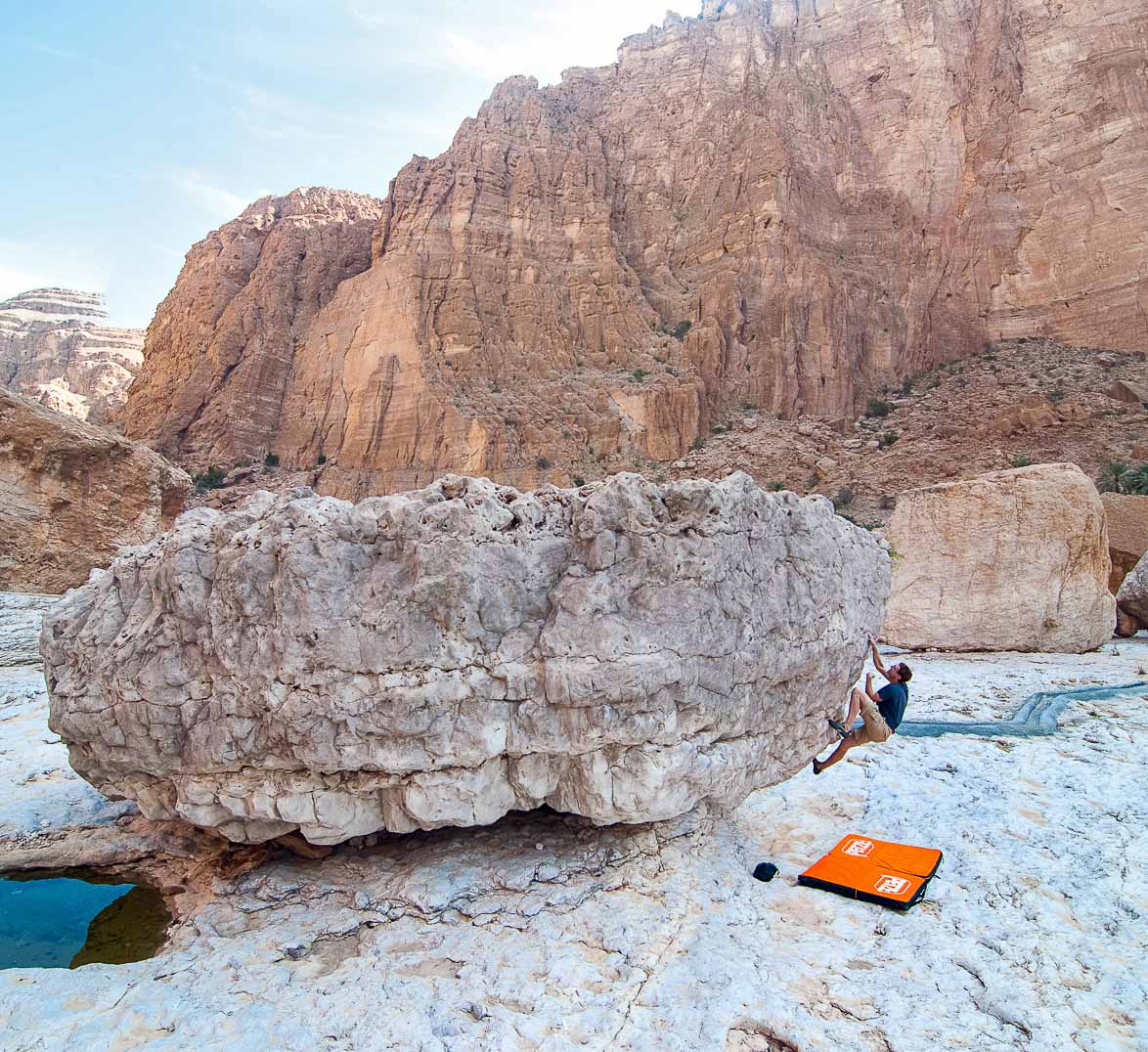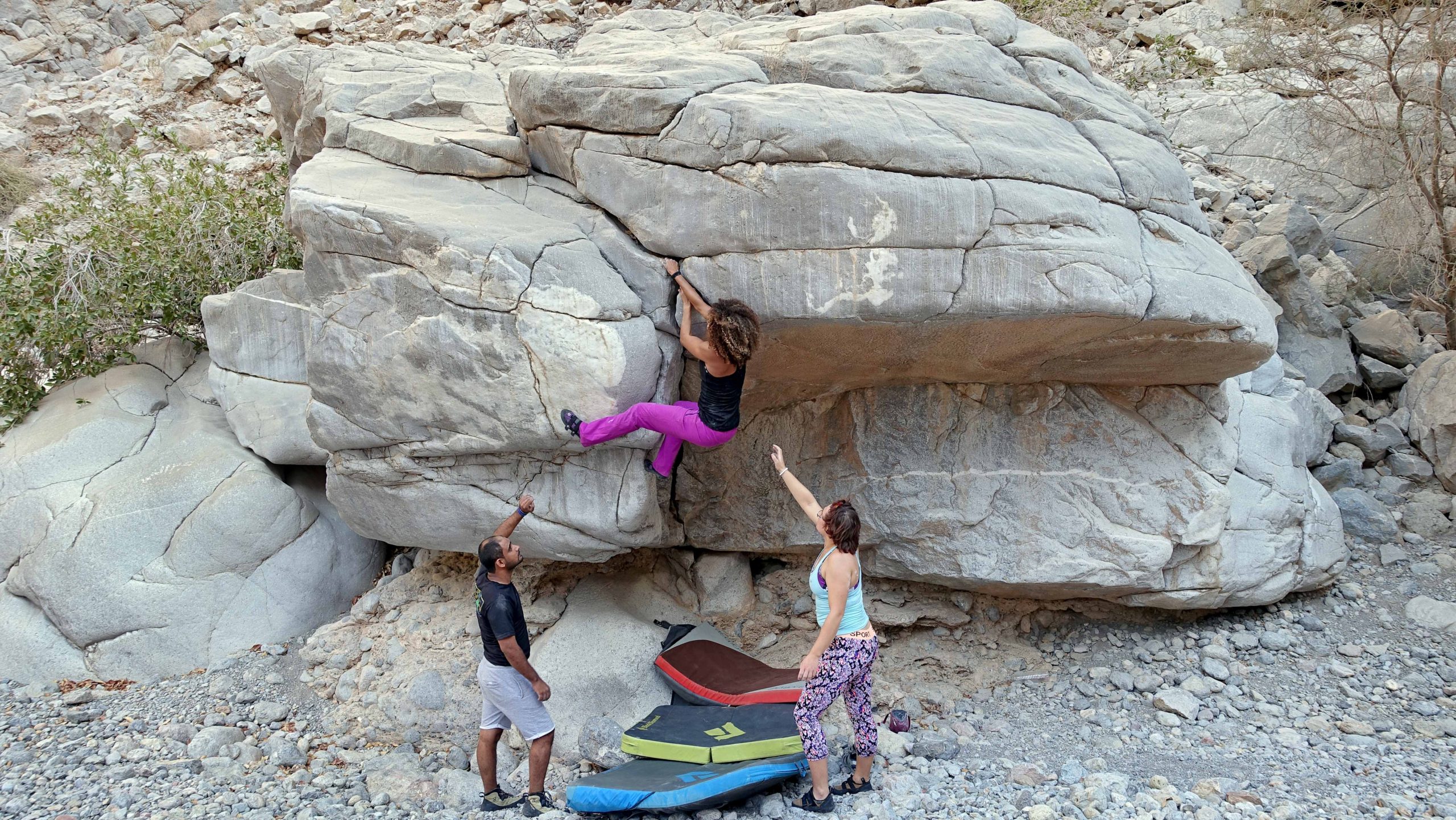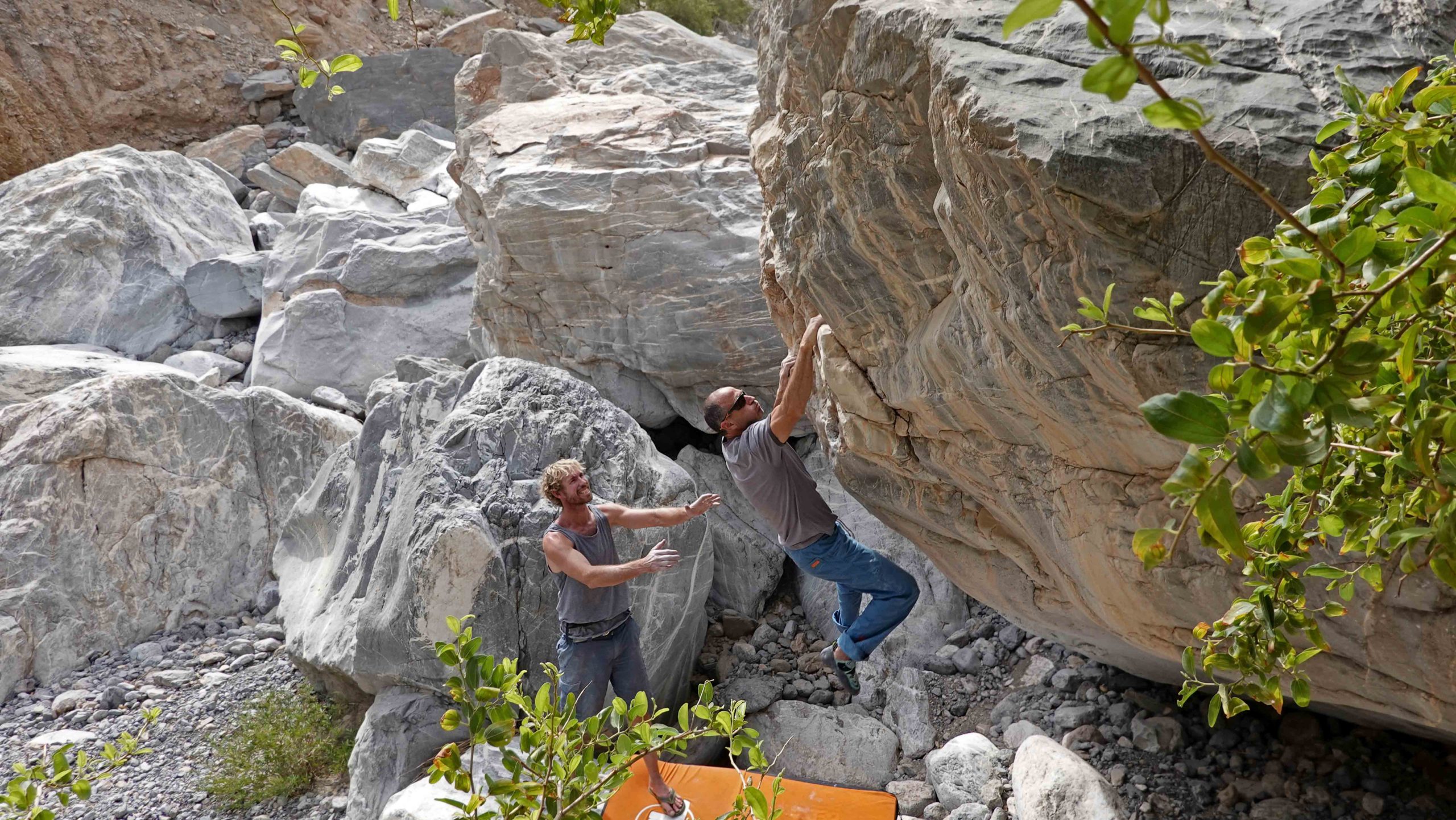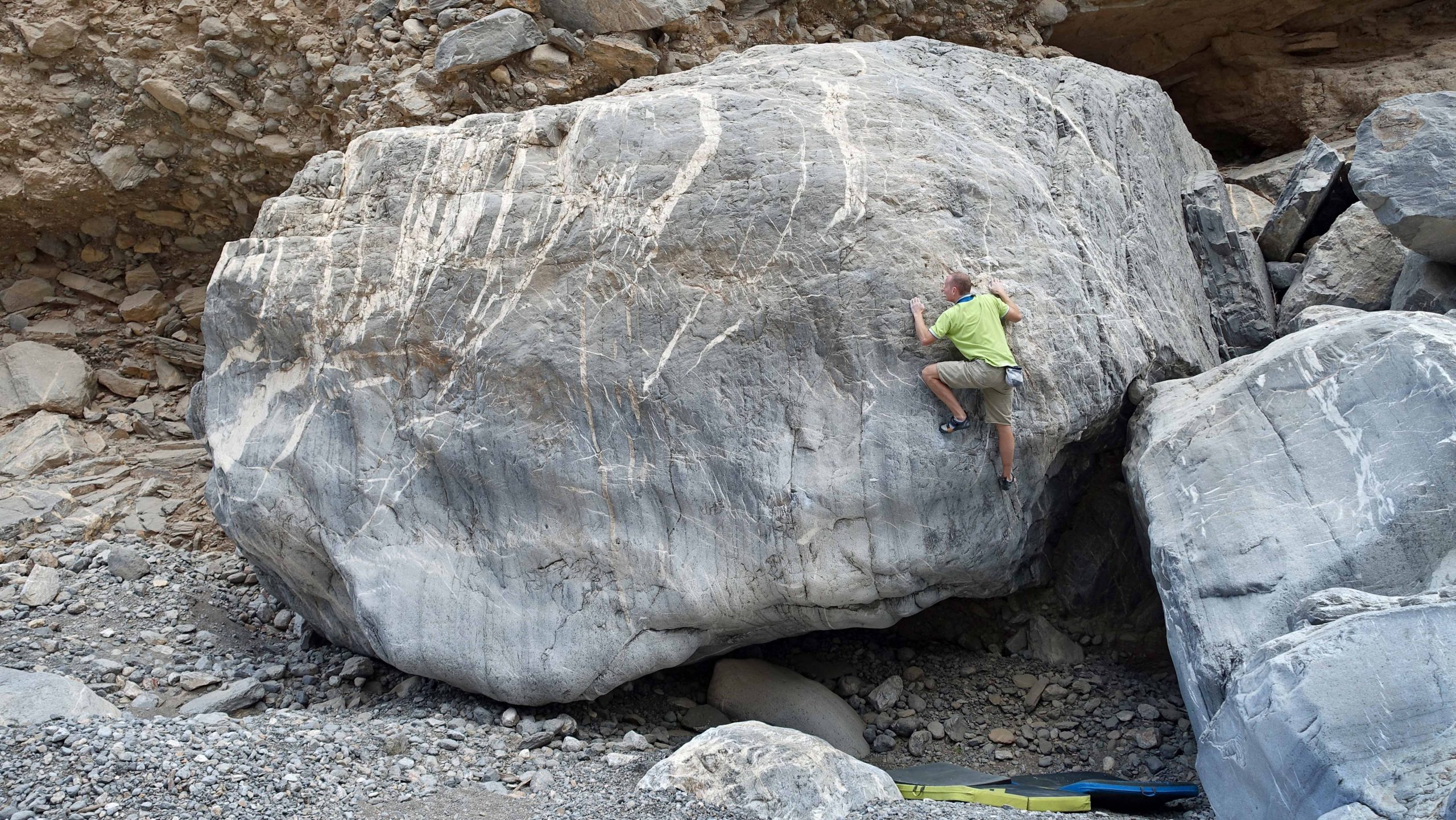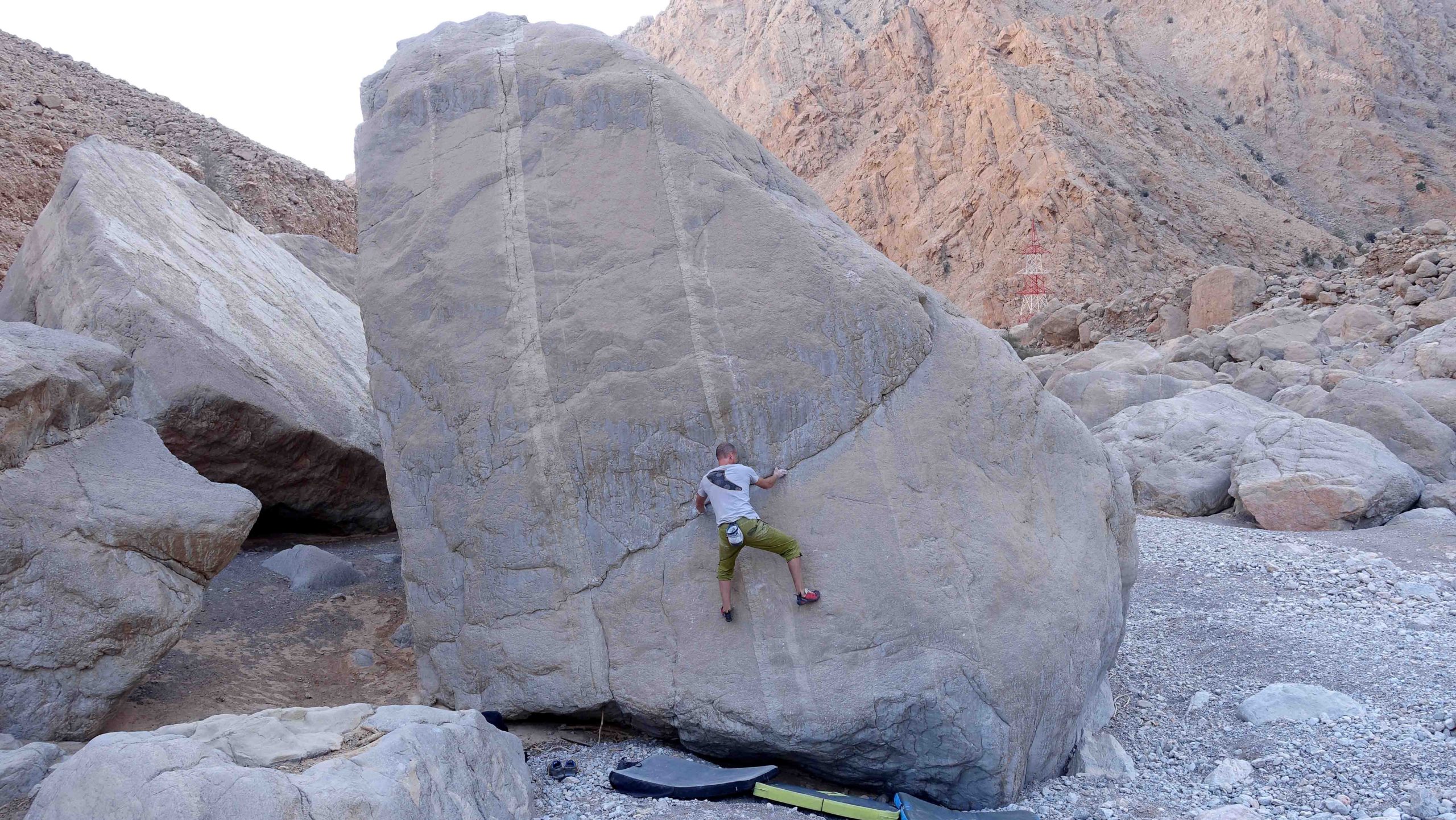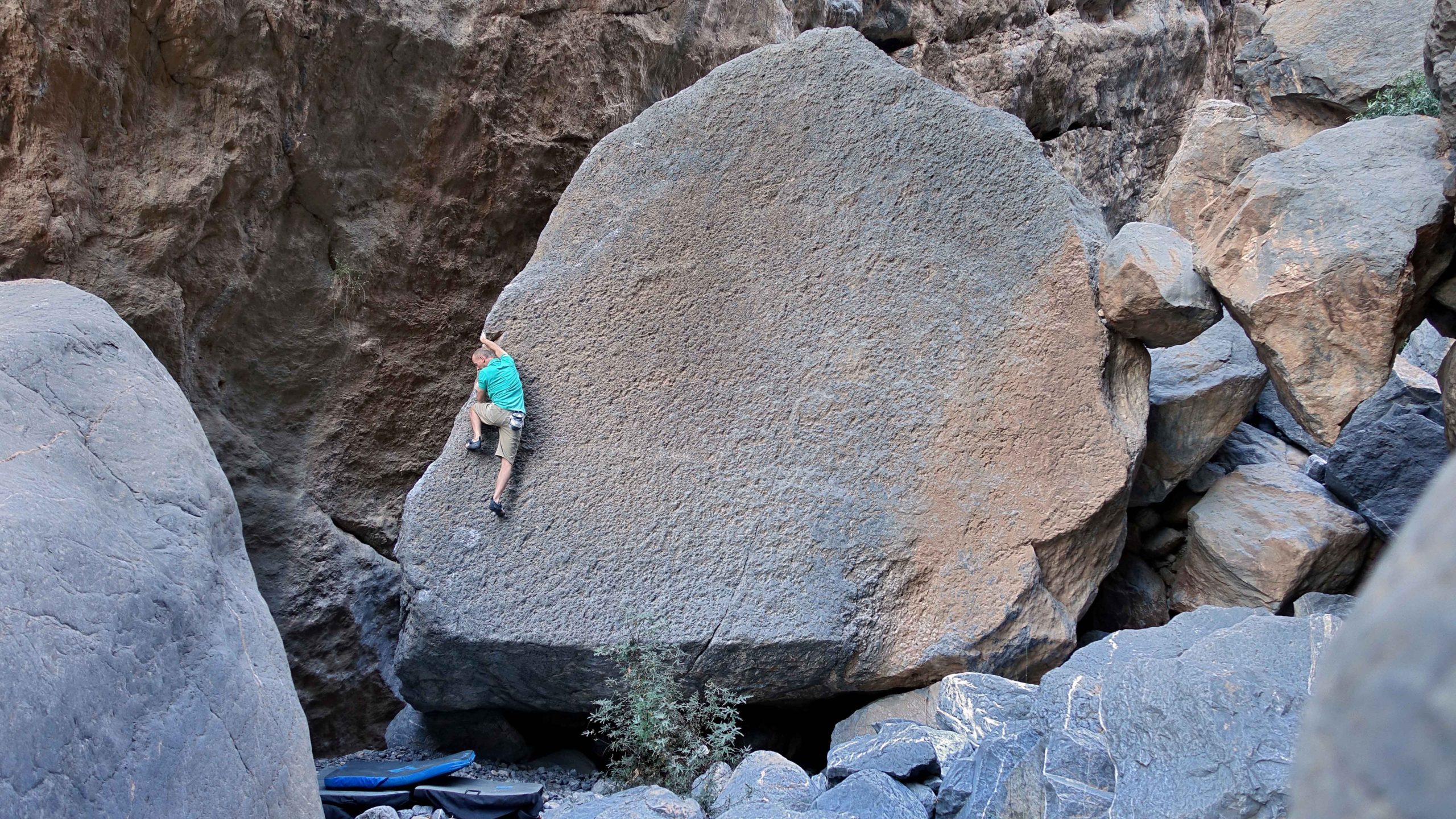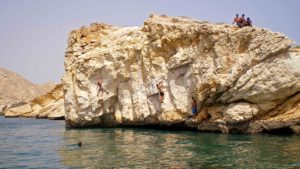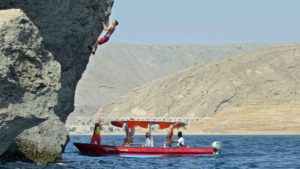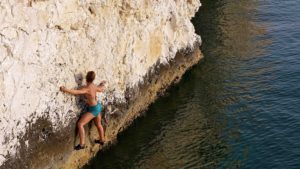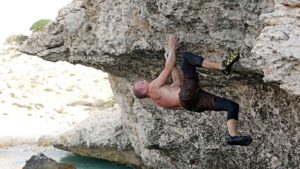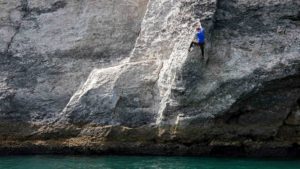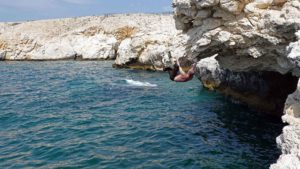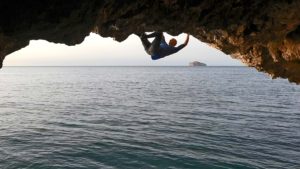Oman Bouldering by Jamie Moss & Gary Goldfinger
If you’re reading this you’re probably either an international climber contemplating their first visit to the Sultanate of Oman, or you’re lucky enough to already live in Oman and are excited to get out and explore some new rock. If you’re in the second group, you won’t need convincing as to how wonderful Oman is, and if this is your first trip, welcome!
The Sultanate of Oman is an exceptional destination for all kinds of adventure tourism. You may primarily be a boulderer, but in Oman you can also find top-notch sport climbing (see our sport guides here and here), some of the most accessible deep-water soloing in the world (see here), and even Alpine-style rock routes. Besides climbing, there are stunning oasis-like canyons to explore and vast sandy deserts to venture into. The stable climate and vast open spaces make Oman an absolute dream for camping trips. The Omani locals are incredibly friendly and English is widely spoken.
Oman is blessed with an abundance of rock. Almost the entire coastline from the Musandam Peninsula in the far north to Salalah in the south is backed by bare limestone hills and mountains. As spectacular as this is, it can also be somewhat overwhelming for the visiting climber! However, closer inspection reveals that much of the rock is too weathered and fragile for good climbing. In general, only cliffs that are regularly swept by rain, floodwater or ocean waves have that perfect blend of well-featured yet solid rock. Decades of exploration by dozens of individuals, often during the sweltering summer off-season, has created a long list of venues for all styles of climbing. For bouldering, this is generally within the dry river canyons – wadis – that criss-cross the country.
Whether you’re a visitor, a resident or an Omani local, our new guide will provide you with hundreds of boulder problems in spectacular and often isolated locations. Those who live in Muscat have five different after-work venues to choose from, all within the city limits. There are harder lines to project, easy circuit problems and even super-long traverses for those who wish to get fit. Jaded sport climbers will be pleased to learn that Oman’s three main bolted crags – Khubrah, Daykah and Hadash – all offer quality boulder problems as an alternative to bolt-clipping.
Weekend warriors can choose from any of five canyons located along the highway to Oman’s main interior city, Nizwa. All have been developed in the last few years and are documented for the first time in our latest guide. If you’re driving to the United Arab Emirates (UAE) and fancy a spot of bouldering followed by a dip in clear blue spring water, then you can use the guide to locate Wadi Damm.
Those with enough time for a proper road trip can reach either of Oman’s world class bouldering venues. A half-day drive north from Muscat, via the UAE, will take you to Damian’s Boulders in Wadi Khab Al Shamsi on the Musandam Peninsula. Alternatively, a few hours driving southeast along the coast road from Muscat, followed by a few hours of hair-raising off-roading, will get you to the incredible Valley of Giants at Umq Bir, above Wadi Tiwi. A superb film by Read Macadam and Miguel Willis documented the bouldering at Umq Bir (see here). A one-day drive south from Muscat will take you to Oman’s tropical second city, Salalah, where recent exploration for boulders has yielded some impressive finds.
So, if you like to mix your bouldering with adventuring in roughly equal parts, you will not be disappointed with a visit to the Sultanate of Oman!

